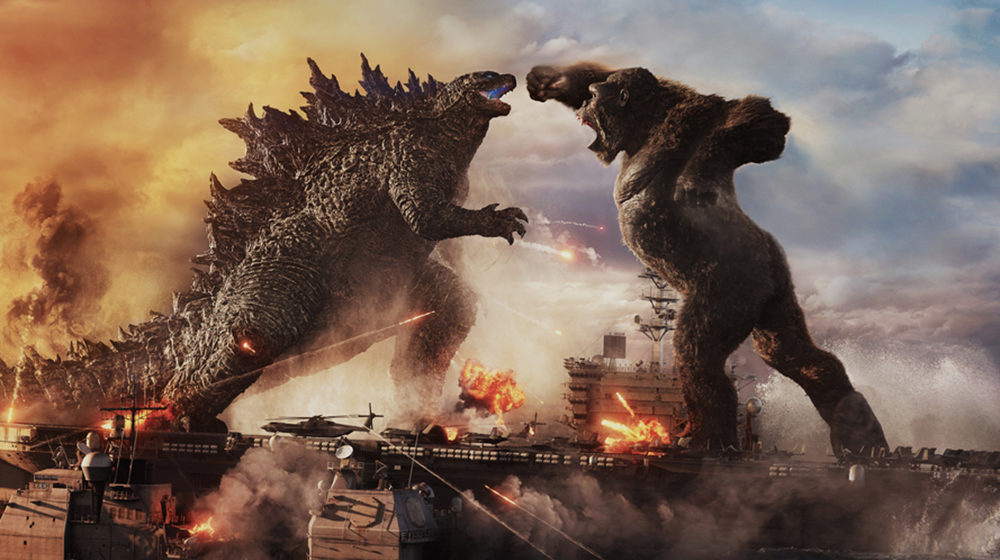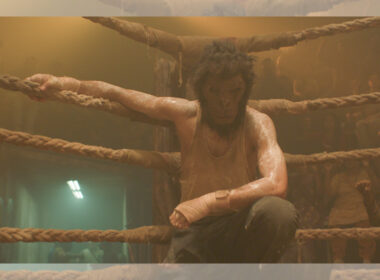Rating: **
There’s a film festival in Brussels where once a year fans of all things horror, sci-fi and fantasy meet to watch new releases in the genre in a very unique way.
The festival’s dedicated fanbase encourages the audience to interact with the film. Instead of a quiet screening of a horror film people shout, answer back, and react to every moment of every film. Something interesting then happens where great films get their due respect and bad films are elevated to cult status, at least for providing an entertaining screening.
I wish I had seen Godzilla vs. Kong at that festival. A fever dream departure from the rest of the franchise, with steps so bananas the mere inclusion of Kong isn’t even the craziest thing about it (and that was done before, and much better, in 1963, by the original Godzilla director Ishirō Honda).
2019’s Godzilla: King of Monsters, which saw the monster lizard saving humanity from a horde of other classical monsters, set up a match against Kong through a couple of daft background easter eggs. Yet it feels like no one had a plan on how that was going to play out, so the solution comes as a weirdly contrived set-up in which a suspiciously evil organisation pays to transport Kong to find the entrance to another world in the core of our planet, where supposedly all Titans come from. As soon as Kong is released from his confinement, a very angry Godzilla instinctively travels to him to fight to the death, for there can be only one Titan (which opens a whole lot of other questions about the rules of this universe).
At the same time, a group of conspiracy theorists, led by Millie Bobby Brown, Brian Tyree Henry and Julian Dennison, infiltrate the aforementioned evil corporation to find why Godzilla is also gravitating towards their own testing sites.
A lot more happens but it’s all of little to no importance. The entire plot — all that effort into writing dozens of pages of set-up and introduce a pretty solid cast of actors including Rebecca Hall, Alexander Skarsgård, Eiza González, Kyle Chandler and Demián Bichir — to take such a long time to give the audience what it really wants: gigantic monsters fighting.
The plot never slows down enough to give the characters some breathing space, but the pace comes to an almost stand still enough times for one to regain consciousness and question: why are we watching this?
What he does nail, no questions asked, is the monsters’ fights. By the start of the third act, most of what’s going is between a big lizard, a big monkey, and a third party I won’t spoil here, in a neon-lit Hong Kong. Let me tell you, it’s terrific. As far as action goes, this is that kind of brutal, titillating cacophony that cinema was made for since RKO released King Kong in 1933.
It’s such an impressive build-up, and gorgeously shot, that by the end of it the audience I was in erupted in thunderous applause and shouts of “that’s what I’m talking about”. And I joined in.
But was it all worth it for 15 minutes of exhilaration? All the ideas behind it are grandiose and borderline insane, in an entertaining way, but the film relies too much upon the flawed moniker “so good it’s bad”.
The first Godzilla movie came out only nine years after Hiroshima to tell the story about a radioactive monster destroying Tokyo, in a blatant metaphor of an entire country coping with destruction. The sequels built on that theme to analyse how Japan accepted and absorbed the culture of the power that destroyed two of its cities.
Maybe Wingard was looking more at 2004’s Godzilla: Final Wars, from cult director Ryûhei Kitamura, that has the same kind of no barrels hold, no idea is too stupid, mentality. But that film had an incessant pace that wouldn’t let the audience take a breather and used it to show the cultural importance of the franchise in modern Japan. It even includes a scene where Godzilla fights a badly CGI doppelgänger of the 1998 Roland Emmerich American remake.
What I think Wingard missed the most here was in the form. A lot of faults come across as “bad on purpose” because maybe that’s what he thinks B-movies are (although neither Godzilla nor King Kong could be considered as such). The thing about those films is that they are labours of love built from low budget with a lot of determination. They are bad because there was no time, money, or crew to work a script and a storyboard long enough to make it good. It’s not on purpose, it’s a consequence. A multi-million-dollar blockbuster from not one but two major studios doesn’t have that excuse. They have the resources to produce a large-scale picture that honoured the legacy of both Godzilla and Kong and still made it like a child on Red Bull and MDMA. It didn’t have to be this clumsy and certainly not this dumb.




